In recent years, I’ve been intrigued by the growing attention towards peptides. They’ve been making waves due to their potential applications in treating various conditions. Peptides for recovery, tendon repair, injury, and muscle repair have all been developed and tested in animal models. These peptides are not just beneficial, they’re also convenient to work with.
What’s impressive about peptides is their high specificity, low toxicity, and the ability to mimic natural biological processes. They can be produced synthetically and tweaked to enhance their stability, bioavailability, and target selectivity. From regulating hormone levels to modulating immune responses, the therapeutic applications of peptides are vast and promising.
Peptide Therapy
In my journey of exploring how peptides can be beneficial, I’ve come across a fascinating concept known as Peptide Therapy. It’s a kind of rejuvenation treatment that optimizes natural hormone and amino acid production and release, which allows your body to maintain a healthier balance.
Peptide therapy treatments are made available in various forms such as injectables, oral capsules, sublingual drops, IV drips, or in powdered form to mix with liquids. It’s not your run-of-the-mill, over-the-counter treatment regime. The peptide chosen for you will depend on your health concerns and your wellness goals, determined during a consultation. And don’t worry, it’s highly likely you’ll find a treatment that aligns with your objectives.
Sure, a balanced diet and regular exercise play key roles in maintaining robust health. As we age though, our body’s ability to repair itself naturally tends to decline. That’s where peptide therapy steps in as a wave-maker.
By increasing health and the function of cells all over the body, peptide therapy could be instrumental in giving your wellness goals a significant push. I’m talking about peptide therapy benefits like
- Collagen Repair: This has the power to boost your skin elasticity and reduce fine lines and wrinkles.
- Strengthening Bones: Peptide therapy can help grow stronger bones, increasing bone density in the process.
- Boosting Immune Function: It can lead to a more robust immune response.
- Improvements in Athletic Performance: It can act as a catalyst for positive changes in your physical performance.
- Weight management: Getting your weight under control could become a lot easier.
- Improving sleep: Sleep, an often underrated aspect of wellness, can also get a boost.
Moreover, this therapy can even help you maintain healthy hair and nails, improve joint and tendon health, recover muscle and tissue faster, and enhance your sexual health. Now that’s what I call taking wellness to a whole new level with peptide restorative therapy.
What are Peptides?

Peptides are a hot topic in the world of health and wellness. They’ve surged in popularity due to their potential in treating various conditions. Peptides for recovery, tendon repair, injury, and muscle function are not just catchy buzzwords. These formidable treatment options have been developed and thoroughly tested in animal models.
The beauty of peptides lies in their high specificity and low toxicity levels. They also have an uncanny ability to mimic natural biological processes. In other words, when introduced to the body, they work harmoniously with its existing system rather than against it. This symbiotic relationship provides a variety of health benefits without causing undue stress to our biological systems.
Here’s another trick up their sleeve: the manufacturing of peptides. Modern technological advancements have allowed for the synthetic production of peptides. Moreover, they can be designed or modified to boost their stability, bioavailability, and target selectivity. This increased control over their formulation makes peptides particularly convenient to handle and implement in various therapeutic applications.
Moving the spotlight to their therapeutic applications, peptides take center stage in a diverse range. A key application involves the regulation of hormone levels. Peptides can act as hormone analogs or modulators, influencing hormone production, release, or activity. For instance, insulin and glucagon-like peptide-1 (GLP-1) are peptide hormones instrumental in blood sugar regulation.
Another important role that peptides play is in the modulation of immune responses. They can interact with immune cells and modify immune responses to suit the body’s needs. The implications of this promising range from improving overall wellness to aiding recovery after intense physical activity.
In short, while their stature may be small, peptides pack quite a punch with their wide range of health benefits.
Peptides Used for Tissue Repair
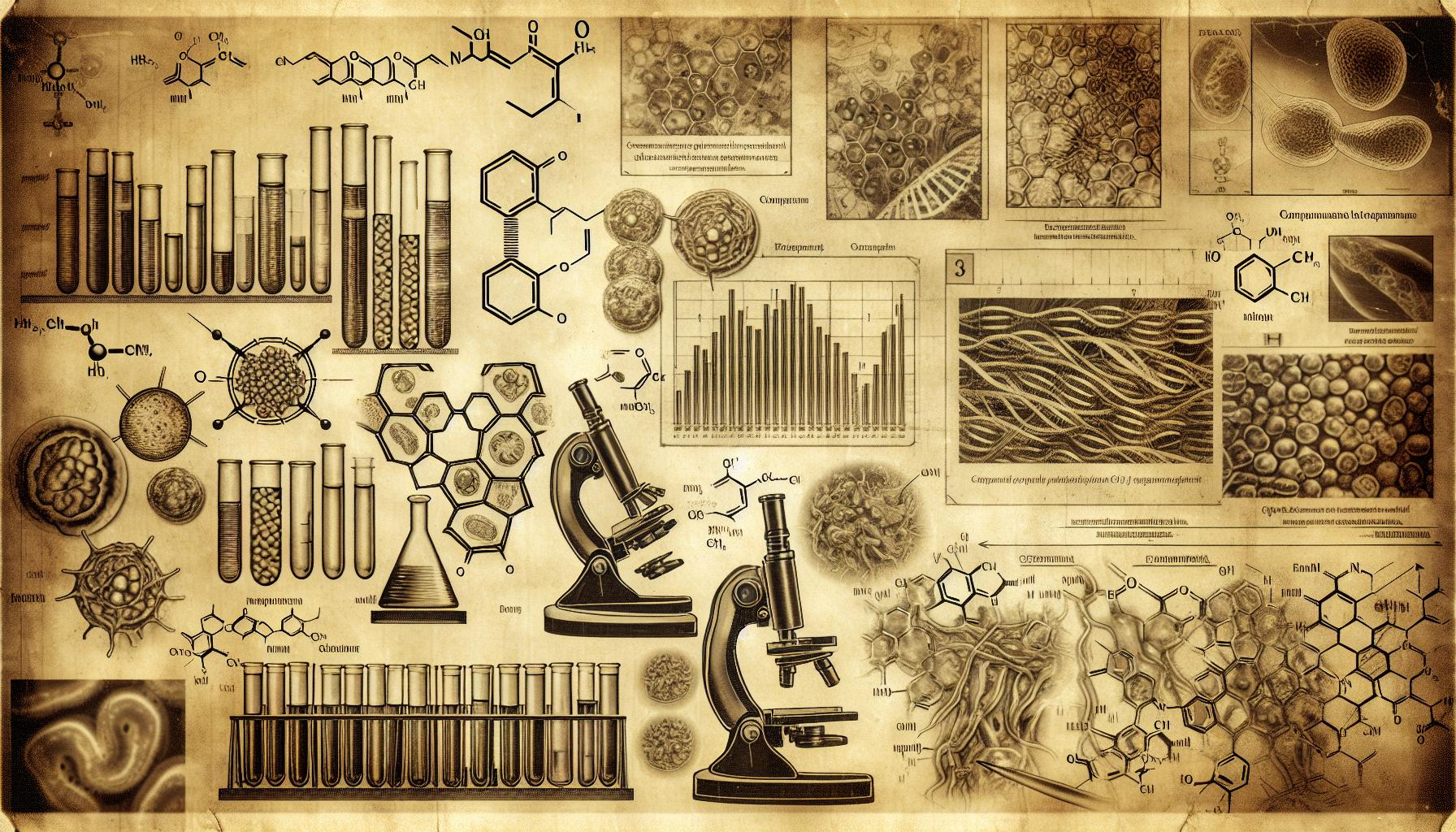
Having a diverse array of peptides at our disposal allows for more targeted interventions. These peptides not only accelerate healing but also reduce downtime, resulting in less discomfort and quicker returns to normal activities. A few noteworthy ones include Thymosin beta-4, TB-500, Melanotan II and CJC 1295.
Thymosin Beta-4 (TB4)
The first among them is Thymosin beta-4, a peptide that plays an integral role in tissue repair and regeneration. Numerous studies have linked its use to improved wound healing, making it particularly beneficial in cases of chronic wounds or ulcers resistant to standard treatments.
TB-500
TB-500, another tissue regeneration peptide, shares a common lineage with Thymosin beta-4. In fact, TB-500 is a synthetic version of TB4, optimized for greater stability and potency. This peptide does wonders in facilitating wound repair and reducing inflammation, making it an invaluable component of the peptide treatment toolkit.
Melanotan II
We then have Melanotan II, typically associated with skin health due to its role in melanin production. Beyond its ability to tan the skin, Melanotan II has shown therapeutic potential in repairing damaged skin tissue. Its capacity to stimulate melanogenesis not only provides a natural protective barrier against harmful UV radiation, but also aids in the recovery from skin damage.
CJC 1295
Finally, CJC 1295 is known primarily for its role in hormone regulation. By stimulating growth hormone levels, CJC 1295 can indirectly aid in the tissue repair process. It’s also linked to increased protein synthesis, a crucial mechanism in the repair and rebuilding of muscle tissue.
Having a variety of options allows us to adapt to individual needs, creating a more personalized approach to health and wellness. While these peptides have demonstrated significant potential to accelerate and enhance tissue repair, it’s critical to remember that peptide treatment should always be under the supervision of a healthcare provider. It’s not a substitute for more mainstream forms of treatment, but rather a complementary approach that can be integrated into a larger health regimen for maximum benefit.
Let’s continue to delve into the science behind these peptides and discover why they hold so much promise in regenerative medicine.
The Effects of Peptides on Tissue Repair
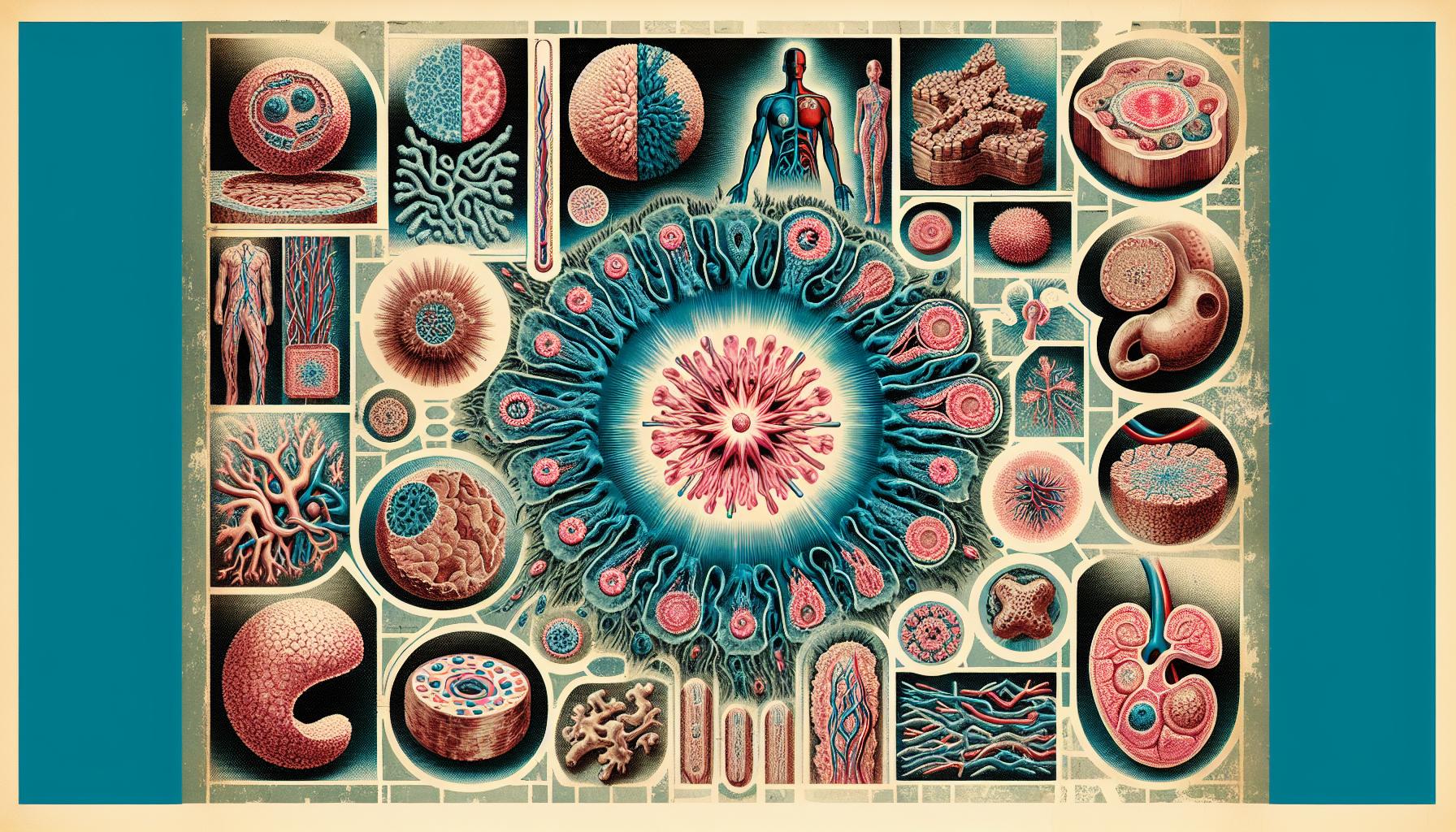
In highlighting the effects of peptides on tissue repair, it’s crucial to understand their potential in hastening the healing process. Whether recovering from injuries, surgery, or disease, peptides can shorten downtime and alleviate discomfort, enabling a quicker return to normal activity. Existing naturally in our bodies, these peptides receive accolades for their well-tolerated nature and minimal side effects. A common occurrence might be mild irritation at the site of injection. Predominantly, many possess anti-inflammatory properties, assisting in pain management associated with injuries and promoting overall tissue health.
When it comes to tissue repair, the promising aspect about peptides lies in their versatility. They are specially designed to bind to specific receptors on cell surfaces, hence influencing cellular activity directly. Their significant roles in the body, especially regarding tissue repair and regeneration, have pitched them as a focal point in medical research.
Below is a markdown table of the top-five healing peptides standing out for their beneficial roles in wound healing, tissue repair, and regeneration:
| Peptides | Description |
|---|---|
| BPC-157 | A synthetic peptide derived from a protein in gastric juice; it promotes tissue repair and healing in various models |
| Thymosin Beta-4 | Efficient in promoting the healing of a wide range of tissues, including skin, muscle, tendon, ligament, and bone |
| TB-500 | Its role in tissue repair and regeneration is noteworthy |
| Melanotan 2 | Known for its influential role in tissue repair and recovery |
| GHK-Cu | Contributes significantly to wound healing and tissue repair |
The BPC-157 peptide, for instance, is also known to promote angiogenesis. That’s the formation of new blood vessels, a fundamental process for the delivery of nutrients and oxygen to healing tissues. These qualities make peptides an integral part of the future of tissue repair therapies.
Advantages and Disadvantages of Using Peptides for Tissue Repair
In the realm of peptide therapy, BPC 157 is an incredible compound garnering attention. It has opened up a world of possibilities, notably for athletes seeking optimal health and swift injury recovery. Years of medical research back the beneficial properties of BPC 157. It is hailed for assisting athletes in regaining their peak performance levels after their bodies incurred damages that seemingly extended beyond repair.
One of the standout benefts of using peptides for tissue repair lies in their ability to speed up recovery time. Achieving peak performance after an injury does not need to be an uphill struggle. Bountiful reports indicate that the use of peptides can help in overcoming such challenges, facilitating faster recovery than traditional methods.
Apart from the fitness industry, peptides have exhibited potential in dealing with inflammatory conditions like ulcerative colitis. Research suggests that peptides like catestatin regulate intestinal mucus dynamics, lessening colitis severity while promoting intestinal cell proliferation and migration. This action chain bolsters wound healing in the intestinal environment.
But, there’s no rose without thorns. Some attempts to maximize the benefit of peptides, such as engineering efforts to cyclize catestatin, have proven futile. The cyclic derivatives synthesized lost their biological activity. The deviation in the structure of the amino-terminal domain is contemplated as a probable reason. It’s clear that we still have a lot to learn about optimizing peptide use for tissue repair.
In essence, peptides, particularly BPC 157, are changing the game in recovery and tissue repair. They hold a myriad of benefits from hastening healing to assisting in the management of inflammation. The flip side, however, is the intricate balance of preserving biological activity.
Clinical Applications of Peptide Use in Tissue Repair
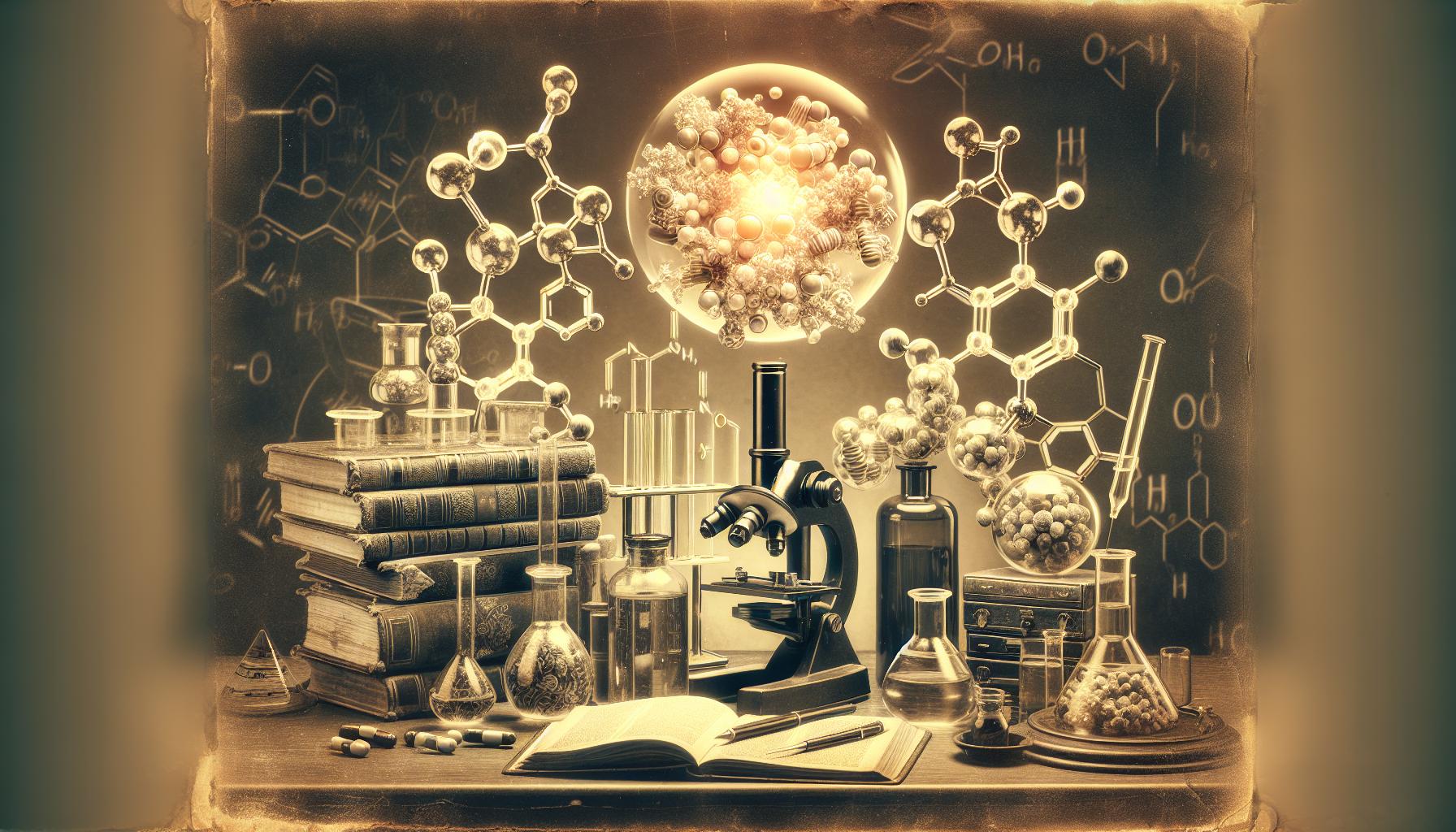
When it comes to tissue repair, peptides exhibit a wide array of clinical applications. From wound healing, muscle recovery, to promoting tissue regeneration in muscles, bones, skin, and ligaments. They’re exceptionally useful in situations where chronic wounds or ulcers defy standard treatments.
In the intricate process of wound healing, which involves inflammation, cell proliferation, and tissue remodeling, peptides can offer significant support. They achieve this by improving wound healing and reducing the likelihood of scar formation. When it comes to muscle recovery, muscle-related injuries or muscle-building athletes can reap major benefits out of peptides, such as CJC 1295. These peptides stimulate the release of growth hormones, encouraging protein synthesis and inhibiting protein degradation, thus fostering muscle recovery.
Thymosin Beta4, a natural peptide, plays vital roles in various cellular processes, such as wound healing and tissue repair. Its synthetic counterpart, TB500, though slightly more limited, has similar healing properties. Both variants are known to enhance the migration of cells to the injury, promote angiogenesis or the formation of new blood vessels, and regulate inflammation. Thymosin Beta4, in its 43 amino acids long form, has already been under scrutiny for its potential therapeutic applications in wound healing, corneal repair, and cardiac regeneration. My research findings point to several key points around its effects.
Similarly, the peptide, Catestatin, emerges from the proteolytic cleavage of the protein Chromogranin A (CgA), found in the chromaffin cells of our adrenal glands. Initially marked as an inhibitor of catecholamine release, this neuroendocrine AMP promises a hopeful lead in promoting wound healing in inflammatory conditions.
In light of the above, integrating these well-researched peptides into our healing regime can indeed revolutionize the way our bodies recover, heal and adapt to injuries or stressors. As we move forward, the focus stays on unearthing new potential of peptides and their optimal application in tissue repair and reconstitution.
Final Thoughts

As we delve deeper into the world of Peptide Therapy, it’s enlightening to understand the significant roles peptides like Catestatin play. Secreted by the adrenal glands’ chromaffin cells, Catestatin has been linked with crucial metabolic, cardiovascular and immune regulation roles. Additionally, prominent in the realm of wound healing, this peptide stimulates the proliferation and migration of keratinocytes and heightens Ca2 levels in these cells, crucial for tissue repair.
It’s not just these impressive qualities of Catestatin. Its active core, known as Cateslytin, is resistant to degradation by S. aureus secreted enzymes, making it extremely beneficial in tackling infection-prone wounds. With antibiotic-resistant bacteria being a major concern, this aspect of Catestatin certainly paints a hopeful picture.
While discussing the benefits of peptides, the results of concurrent training (CT) in inducing physiological adaptations can’t go amiss. CT demonstrably creates a blend of benefits, primarily a fusion of resistance training (RT) and endurance training (ET). A systematic review has indeed noted similar results in maximal strength and muscle hypertrophy from CT compared to RT alone. Notably, performing RT before ET, as seen in the present study, contributed significantly to enhancing 1RM performance. A marker of explosive strength, this improvement could be attributed to the role of peptides in recovery and muscle growth post-training.
Despite the setbacks of CT possibly affecting explosive strength, introducing sequential concurrent training protocols (SCP) can mitigate these impairments, advocating for a successful shift in explosive strength. The significant difference in rate of force development (RFD) over time in the SCP group denotes the beneficial effects of implementing SCP in CT.
Harnessing the potential of peptides and optimized training protocols introduces a promising future for athletes and individuals keen on maximised performance and faster, more effective recovery. Key to this is peptides like Catestatin, championing efficient wound healing and potentially revolutionising the way our bodies adapt to stressors. Reiterating, however, that our understanding of peptides is still growing and every new study brings us closer to exploiting their full potential.
Peptide Shots – Frequently Asked Questions

Peptide shots, with their learned influence on tissue repair, hold great promise in the world of recovery. Let’s delve into some of the frequently asked questions around these phenomenal compounds.
A common question I often get asked is, “What are peptide shots?” Simply put, they’re injections containing specific sequences of amino acids known as peptides, which influence various physiological processes. These sequences have the ability to bind specified receptors in the body, triggering responses that facilitate recovery.
Another frequent query is, “How do peptide shots work?” Peptide shots work by harnessing the power of specific peptides known for their recovery-enhancing capabilities. For instance, peptides including BPC 157, CJC 1295, and Thymosin Beta4 are known to assist in wound healing, muscle recovery, and tissue regeneration. The activation of these peptides can promote speedy recovery and aid in managing inflammation.
As for the question, “Are peptide shots safe?” Yes, they typically are. Peptide shots are generally well-tolerated and safe. However, it’s always advised to consult with a healthcare professional before starting any new treatment.
Finally, “What conditions do peptide shots help with?” Given the versatile nature of peptides, peptide shots can aid in a wide variety of conditions. Notably, they can help manage inflammatory ailments, assist in wound healing, and support muscle recovery post-training. They can also potentially aid in the treatment of chronic wounds – something that plagues around 6.5 million patients in the U.S. who spend a whopping $25 billion annually on treatment.
In essence, the potential of peptide shots is vast in revolutionizing the way our bodies recover, heal, and adapt to injuries or stressors.
What is included in our peptides injections?
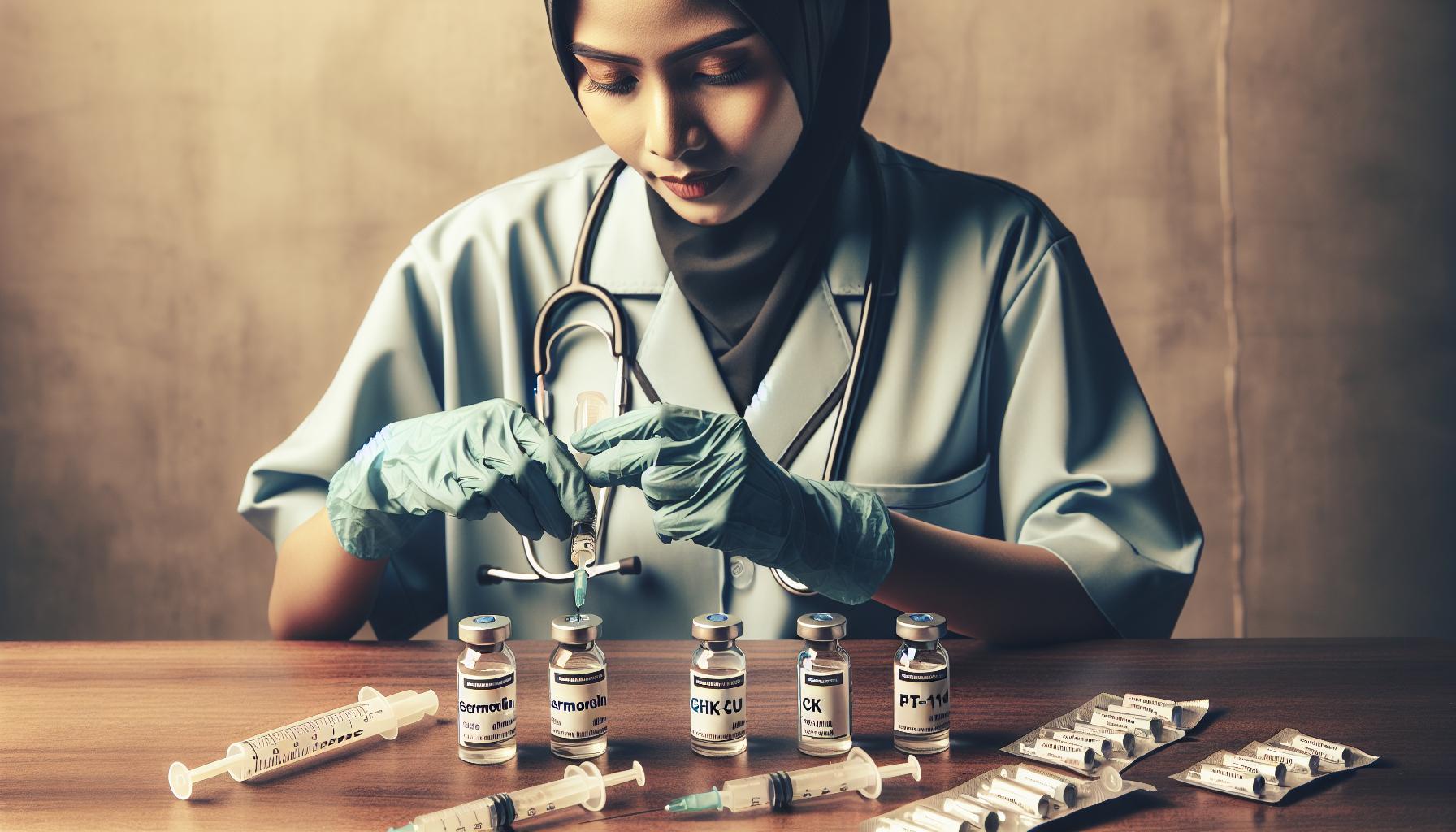
Peptides injections play a key role in the world of regenerative medicine. Especially in their ability to assist with lean muscle growth, tissue repair post-injury, and overall wellbeing. It’s crucial to note that peptide therapy should be administered under the guidance of a healthcare professional. This is to ensure your safety, efficacy of the treatment, and customize the dosage to your unique health history.
Our peptide injections include a variety of exceptional compounds such as Sermorelin, GHK-CU, and PT-141. Each contributes distinct benefits and can be recommended based on your specific needs and health conditions.
Let’s take a quick look at the probable advantages these peptides can provide:
- Sermorelin: This peptide is acclaimed for its ability to aid in fat burning, help build muscle, increase bone density, and enhance athletic performance. It’s also a fantastic option if you’re looking to boost your energy and strength levels.
- GHK-CU: GHK-CU plays a role in promoting tissue repair post-injury. This makes it a potential choice for those needing help in quicker recovery and regeneration.
- PT-141: A game changer in improving overall wellbeing, PT-141 is often suggested to users aiming for enhanced performance, better sleep quality, and a host of other health and lifestyle improvements.
To truly get the most out of peptides injections, make sure to cooperate with a healthcare professional. They’ll be able to guide you in the full process, from explaining administration techniques and potential side effects to monitoring your progress throughout the therapy. By doing so, we can enhance the likelihood of achieving the best possible results from peptide therapy. This, however, isn’t the end-all be-all of peptide therapy. As their potential applications continue to expand, so too does our understanding of how they can be used to boost our health and performance.
What is SERMORELIN?
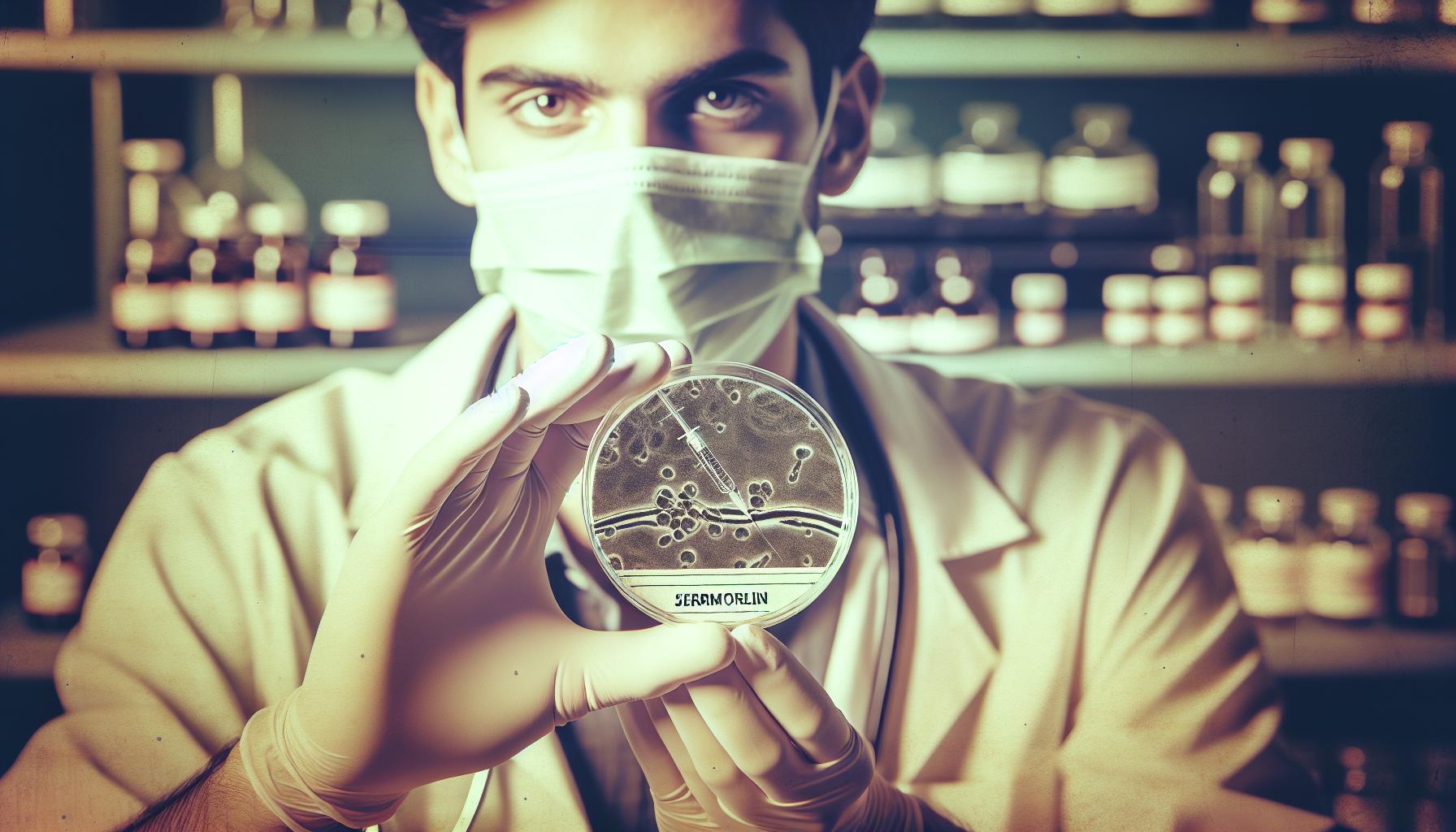
Let’s dive into the world of Sermorelin – an intriguing peptide that’s showing significant promise both in research settings and practical applications. Sermorelin has proven particular potential as an effective agent for tissue regeneration and inflammation management post-injury.
Sermorelin stands out primarily due to its unique ability to stimulate growth hormone (GH) release. Higher levels of GH achieved through Sermorelin supplementation are associated with a successful balance of extracellular matrix production. So, why are we talking about the extracellular matrix? It’s because this health-associated network provides the structural foundation for wound repair, including the essential production of collagen, elastin, and other critical proteins. A balanced production of the extracellular matrix is a crucial factor for effective wound recovery without excessive scar formation.
Another interesting fact about Sermorelin is how it fits into different categories of peptide therapy. Indeed, while it might find a cozy place in the group of peptides for muscle repair, it would be equally suited among those tagged as peptides for tendon repair or peptides for injury.
Moreover, Sermorelin is not only a helper at the cellular level. In the wake of a heart attack, it may provide significant contribution to recovery. As research indicates, Sermorelin can enforce heart cell protection from death, promote new blood vessel growth, and decrease levels of inflammatory cytokines. These effects can lead to a decrease in scar extent and density, offering an improvement to long-term outcomes following a heart attack.
Concurrent Training and Sermorelin
Correspondingly, the choice of Concurrent Training (CT) as a training intervention witnesses multiple physiological adaptations and benefits. CT, married with peptide supplementation such as Sermorelin, can potentially aid recovery and muscle growth post-training, further promoting health and performance. To ensure safety and efficacy, it’s always recommended to work alongside a healthcare professional for appropriate peptide dosage and treatment.
So, there you have it – Sermorelin is proving to be a multifaceted and highly beneficial peptide that catches the eye in scientific circles for its plethora of potential applications. From tissue regeneration to assisting heart recovery after a severe attack, Sermorelin demonstrates the wide, promising scope of peptide science.
How do peptides improve your sleep?
Peptides have emerged as a game-changer in the realm of recovery and healing. They’ve shown remarkable potential in tissue repair, inflammation management, and post-injury recuperation. Peptides like BPC 157 and Catestatin are making waves in the athletic world, aiding athletes in bouncing back to their peak performance levels. With their role in wound healing and tissue regeneration, they’re revolutionizing how our bodies heal and adapt. Concurrent training coupled with peptides can lead to physiological adaptations and enhanced muscle growth. Peptide injections, including Sermorelin, GHK-CU, and PT-141, are becoming popular in regenerative medicine for their benefits in fat burning, muscle building, and overall well-being. It’s crucial, however, to consult a healthcare professional for safe and effective usage. The potential of peptides in health and performance enhancement is expanding, and it’s exciting to see where this peptide science journey will take us.
What is Peptide Therapy?
Peptide Therapy is a branch of medicine that uses specific sequences of amino acids, known as peptides, for healing and regeneration purposes. Their capability to speed up recovery time, manage inflammation, and aid in tissue repair makes them particularly valuable.
What is the use of BPC 157 in Peptide Therapy?
BPC 157, a peptide, is widely recognized for its potential role in assisting athletes in achieving optimal performance levels after an injury. It accelerates recovery and plays a pivotal part in tissue repair strategies.
How does Catestatin contribute to healing in Peptide Therapy?
Catestatin plays a critical role in promoting wound healing, especially in inflammatory conditions such as ulcerative colitis. By fostering intestinal tissue repair, it helps regulate metabolic, cardiovascular, and immune responses.
What are the benefits of peptides like CJC 1295 and Thymosin Beta4?
Peptides like CJC 1295 and Thymosin Beta4 are known for promoting muscle recovery and wound healing. Thymosin Beta4 in particular has potential therapeutic applications in areas like wound healing, corneal repair, and cardiac regeneration.
How does Concurrent Training (CT) complement Peptide Therapy?
Concurrent Training (CT) induces physiological adaptations that can be enhanced further by peptides. Peptides can aid in recovery and muscle growth post-training, potentially enhancing the benefits of CT.
What role do peptide injections play in regenerative medicine?
Peptide injections provide specific peptides, like Sermorelin, GHK-CU, and PT-141, directly to the body, facilitating faster and more effective tissue repair and overall well-being. However, they should be administered under the supervision of a healthcare professional to ensure safety and efficacy.
How does Sermorelin assist in tissue regeneration?
Sermorelin stimulates the release of growth hormones and promotes a balanced production of the extracellular matrix, vital for effective wound recovery. It also shows potential in managing inflammation post-injury and protecting heart cells after a heart attack.
